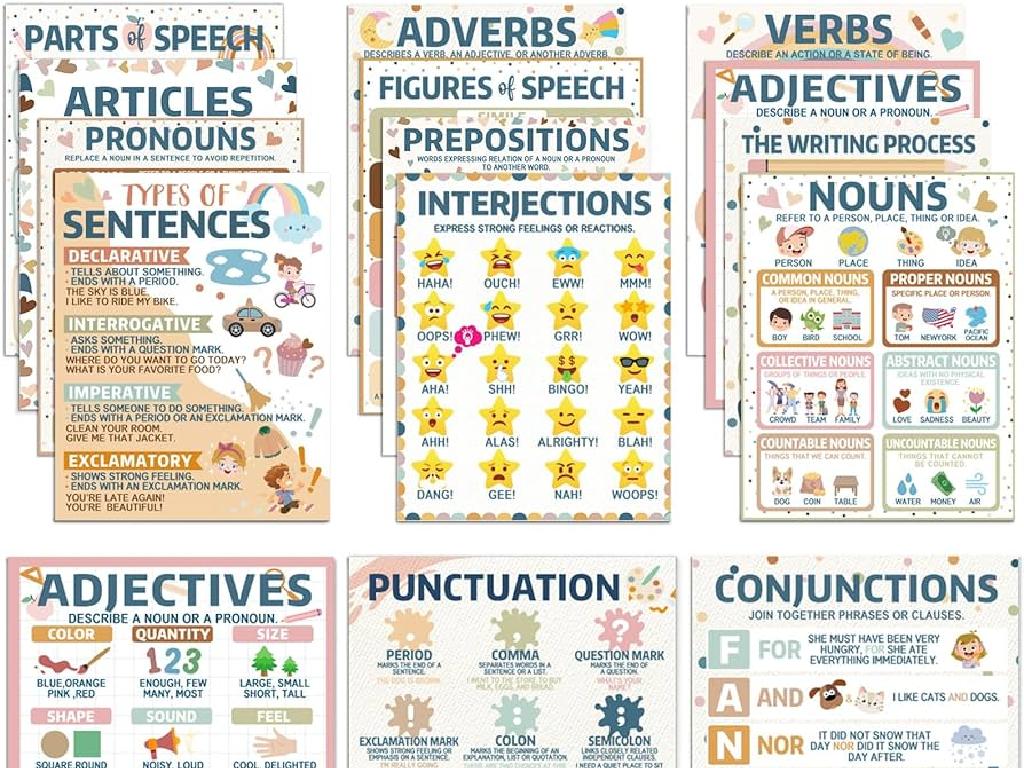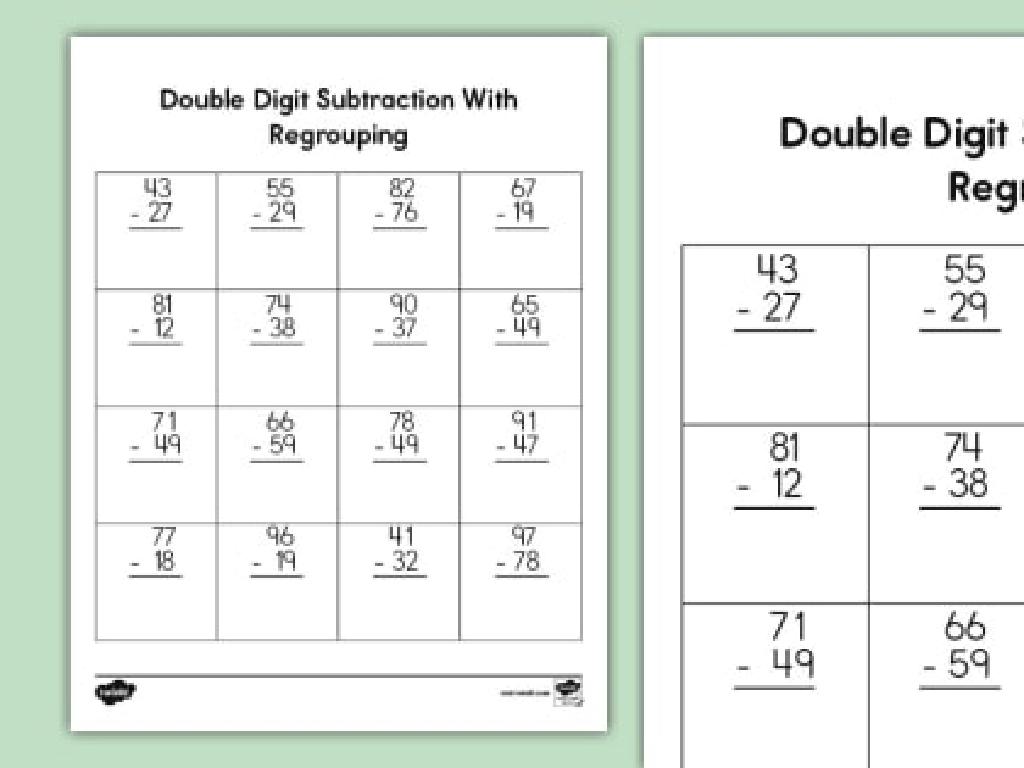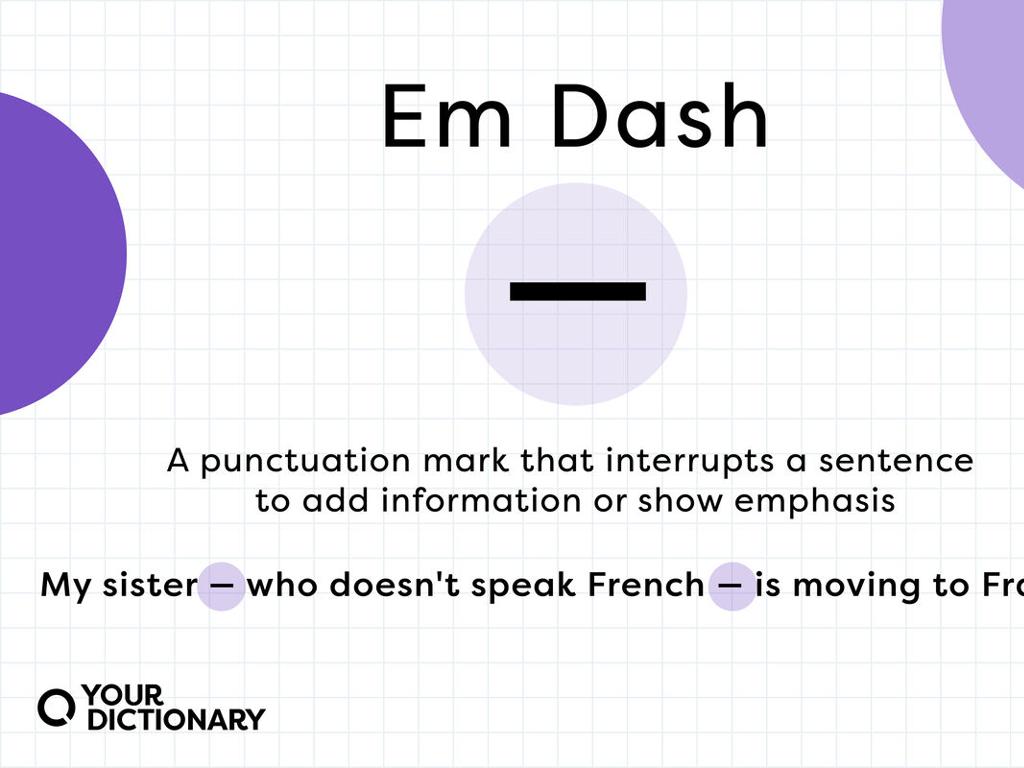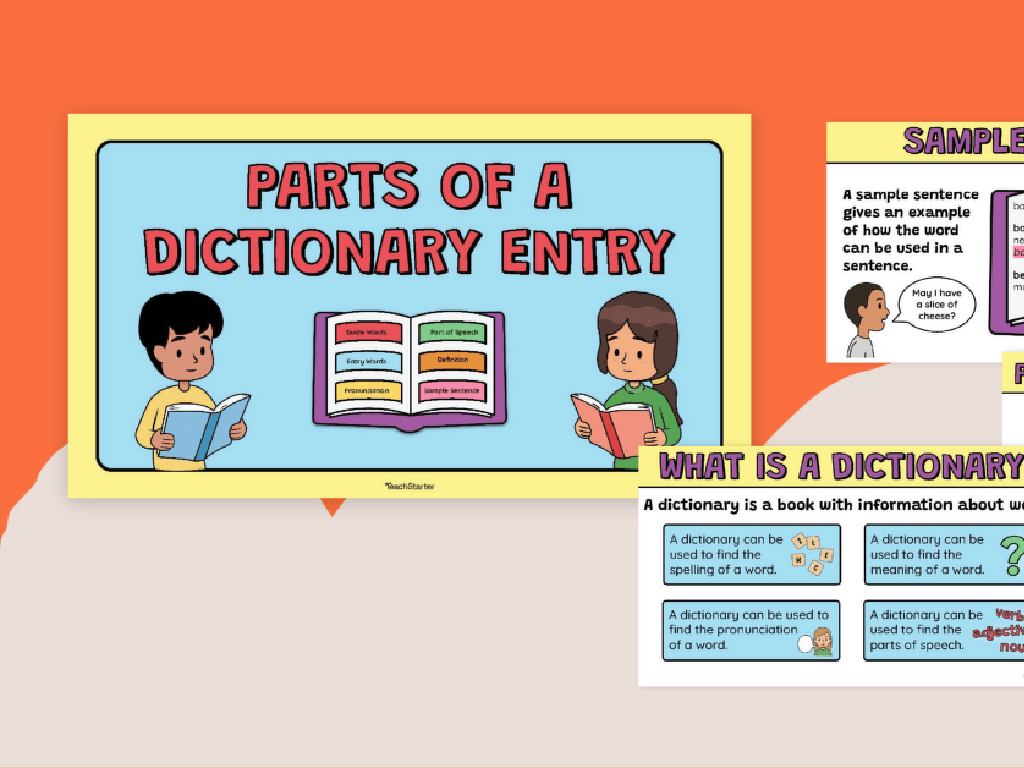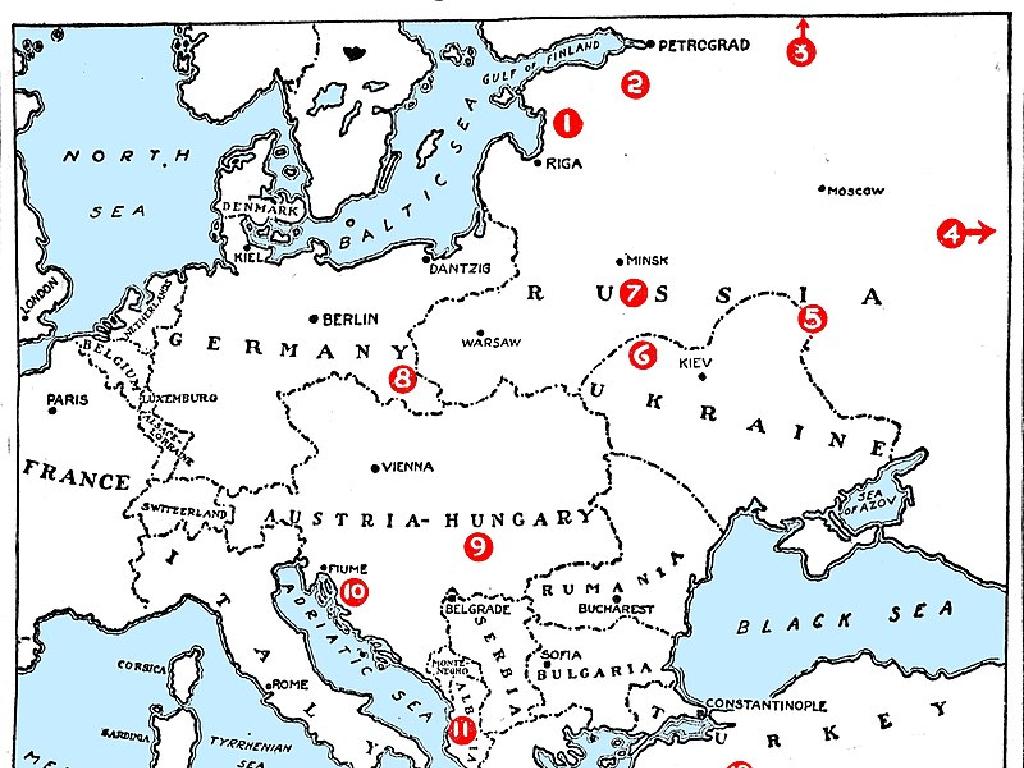Form The Perfect Verb Tenses
Subject: Language arts
Grade: Fourth grade
Topic: Identify The Irregular Past Tense
Please LOG IN to download the presentation. Access is available to registered users only.
View More Content
Mastering Perfect Verb Tenses
– Understanding different verb tenses
– Past, present, future: verbs can change based on time
– Defining perfect verb tenses
– Perfect tenses show a completed action at a specific time
– The role of perfect tenses in communication
– They help us express clear and accurate timing in our stories and conversations
– Practice makes perfect with perfect tenses
|
This slide introduces the concept of perfect verb tenses to fourth-grade students, emphasizing their importance in both writing and speaking. Begin by explaining the basic verb tenses: past, present, and future. Then, define perfect verb tenses as those that describe actions that are completed at a particular time. Discuss why using the correct tense is crucial for clear communication, providing examples of how perfect tenses can change the meaning of a sentence. Encourage students to practice forming and using perfect tenses through written exercises and verbal storytelling, reinforcing the idea that practice is key to mastery.
Mastering Past Perfect Tense
– Forming the Past Perfect Tense
– Combine ‘had’ with the verb’s past participle form
– Use ‘had’ with Past Participle
– ‘Had’ is a helper verb, past participle is main verb’s past form
– Example: ‘had jumped’
– ‘Jump’ becomes ‘had jumped’ to show action was completed
– Example: ‘had spoken’
– ‘Speak’ becomes ‘had spoken’ indicating action was done before another
|
The past perfect tense is used to describe an action that was completed before another past action. To form it, we use ‘had’ followed by the past participle of the verb. It’s important to note that irregular verbs have unique past participle forms. For example, ‘jump’ is a regular verb, so we simply add ‘ed’ to form the past participle ‘jumped’. However, ‘speak’ is irregular, and its past participle is ‘spoken’. Provide students with a list of irregular verbs and their past participles for reference. Encourage them to create sentences using the past perfect tense with both regular and irregular verbs. This will help them understand the concept of sequence of events in the past.
Forming the Present Perfect Tense
– Constructing Present Perfect Tense
– Combine ‘has/have’ with the verb’s past participle
– Use ‘has’ or ‘have’ with verbs
– ‘Has’ for he/she/it, ‘have’ for I/you/we/they
– Examples: ‘has eaten’, ‘have found’
– ‘She has eaten her lunch’, ‘They have found a cat’
– Practice forming sentences
– Create your own examples using ‘has’ or ‘have’
|
The present perfect tense is used to describe actions that have happened at some time in the past and are still relevant now. Teach students to form this tense using ‘has’ or ‘have’ followed by the past participle of the verb. Provide clear examples, such as ‘has eaten’ for singular subjects and ‘have found’ for plural subjects. Encourage students to practice by writing sentences using both ‘has’ and ‘have’ with different past participles. Emphasize the importance of subject-verb agreement and the use of the correct past participle form. Have students share their sentences and provide feedback to reinforce learning.
Future Perfect Tense
– Forming Future Perfect Tense
– Use ‘will have’ + past participle
– Example: ‘will have finished’
– ‘I will have finished my homework by dinner.’
– Example: ‘will have left’
– ‘She will have left for her trip by 8 AM.’
|
The Future Perfect Tense is used to describe an action that will be completed before a specific time in the future. It is formed using ‘will have’ followed by the past participle of the verb. For example, ‘will have finished’ indicates that the homework will be complete before dinner time. ‘Will have left’ suggests that she will depart before 8 AM. Encourage students to think of actions they plan to complete by a certain time and to form sentences using the future perfect tense. This will help them understand how to use this tense in practical situations.
Mastering Irregular Past Participles
– Understanding Irregular Verbs
– Verbs that don’t follow regular -ed ending rules
– Examples of Irregular Past Participles
– ‘Eat’ becomes ‘eaten’, ‘go’ becomes ‘gone’
– Practice Forming Irregular Past Participles
– Find past participles in a fun activity
– Importance of Irregular Verbs in Perfect Tenses
– They’re essential for writing and speaking correctly
|
This slide introduces students to irregular past participles, which are essential for forming perfect verb tenses. Begin by explaining that irregular verbs do not follow the standard pattern of adding -ed to form the past tense. Provide clear examples, such as ‘eat’ becoming ‘eaten’ and ‘go’ becoming ‘gone’. Engage the class with a practice activity where they identify and form past participles of irregular verbs. Emphasize the importance of mastering irregular verbs to use perfect tenses correctly in both writing and speaking. The activity should be interactive, allowing students to discover patterns and exceptions in irregular verb forms.
Perfect Tenses with Irregular Verbs
– Use past participles for perfect tenses
– Past participles often end in ‘-ed’, but not always!
– Examples: ‘had written’, ‘has spoken’
– ‘had written’ is past perfect; ‘has spoken’ is present perfect
– ‘will have gone’ shows future perfect
– Future perfect tense talks about actions that will be completed
– Why some verbs are irregular
– Irregular verbs don’t follow the ‘-ed’ rule due to historical reasons
|
This slide introduces students to the concept of perfect tenses using irregular verbs. Perfect tenses describe actions that are completed at the time of speaking or at a specified time, and they require the use of past participles. While many verbs form their past participle by adding ‘-ed’, irregular verbs do not follow this pattern. Provide examples like ‘had written’ for past perfect, ‘has spoken’ for present perfect, and ‘will have gone’ for future perfect. Explain that irregular verbs are often words that have been in the English language for a long time, and their forms have evolved differently. Encourage students to memorize these irregular forms as they are commonly used in everyday language.
Practice Time: Perfect Tenses with Irregular Verbs
– Understanding perfect tenses
– Perfect tenses show completed actions. We’ll use irregular verbs like ‘eaten’, ‘flown’, ‘driven’.
– Interactive examples
– We’ll form past, present, and future perfect tenses together.
– Group activity: crafting sentences
– In groups, use irregular verbs to make sentences in all perfect tenses.
– Share and discuss with the class
– Each group will present their sentences and we’ll talk about them.
|
This slide is for a class activity focused on forming perfect tenses with irregular verbs. Begin by explaining the concept of perfect tenses and how they are used to indicate actions that are completed at a certain time. Use interactive examples to demonstrate how to form past perfect, present perfect, and future perfect tenses with irregular verbs. Then, divide the class into small groups and have them create their own sentences using each of the perfect tenses with a list of irregular verbs provided. After the activity, allow each group to share their sentences with the class and discuss any common challenges or interesting findings. This will help reinforce their understanding of perfect tenses and irregular verbs. Provide guidance and support throughout the activity to ensure all students are engaged and learning.
Class Activity: Verb Tense Treasure Hunt
– Find sentences with perfect tenses
– Write down the sentences
– Identify the verb tense used
– Is it past perfect, present perfect, or future perfect?
– Share with the class
|
This activity is designed to help students recognize and understand the use of perfect verb tenses in literature. Students will search for sentences in their favorite books that contain past perfect, present perfect, or future perfect tenses. They will then write these sentences down and identify which of the perfect tenses is being used. This exercise will not only reinforce their knowledge of verb tenses but also encourage them to see how these tenses are used in context. During the next class, students will have the opportunity to share their sentences and discuss the different perfect tenses they found. For the teacher: Prepare to assist students who may struggle with identifying the perfect tenses and provide examples for each tense to guide them.
Perfect Verb Tenses: Recap & Homework
– Review of perfect verb tenses
– Why perfect tenses matter
– Perfect tenses show completed actions
– Homework: Craft a short story
– Include past, present, and future perfect
– Use three perfect tense verbs
– Example verbs: has jumped, had sung, will have driven
|
As we conclude, remember that perfect verb tenses are used to express actions that are completed at a certain time. Understanding and using these tenses correctly is crucial for clear communication, especially in writing. For homework, students are to write a short story incorporating at least three perfect tense verbs. This will help them apply what they’ve learned in a creative context. Encourage them to think about actions that have been completed in the past, are complete as of now, or will be completed in the future. Provide examples like ‘has jumped’, ‘had sung’, or ‘will have driven’ to illustrate the concept. This exercise will reinforce their understanding and give them practice in identifying and forming perfect tenses.

